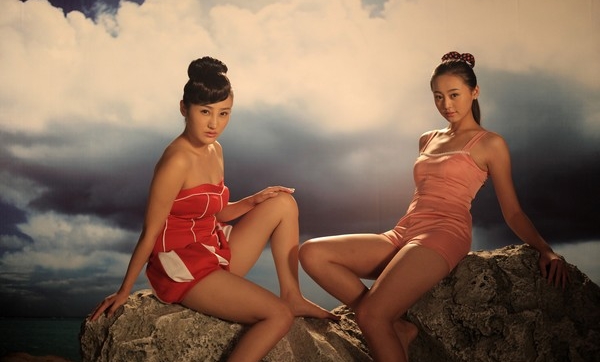For the duration of the exhibition, ACMI will host three of Fudong’s revered video installations, which have been brought over from ShanghART Gallery, Shanghai. The featured works are East of Que Village from 2007, The Fifth Night from 2010 and Yejiang / The Nightman Cometh from 2011. The six-channel installation, East of Que Village is the one that triggered Blair’s fascination with Fudong’s work.
“I saw it at the Sydney Biennale in 2010,” she says. “It’s quite different for his work. It’s a very hard hitting, raw documentary style film installation, which was shot in a little rural village up in northern China. It basically features a pack of wild dogs mauling each other and scavenging and eating each other in this fight for survival.
“It had a very lasting impact on me,” she adds. “I think it shows a different side to the story of China that we’re used to seeing in the media. It’s a reflection on those who are missing out – the victims of the current situation in China.”
In contrast to this rather brutal, traumatic work, the other installations are more indicative Fudong’s signature style, which is rooted in a very beautiful 1930s noir sensibility. French avant-garde filmmakers influence much of Fudong’s work – something of an anomaly in Chinese video art.
“He started studying film at art school,” says Blair, “but he had very limited access to Western film and arthouse film, so he was reading a lot about the French avant-garde and Fellini. He talks about how he had a very vivid image of [Fellini’s] 8 ½ in his mind for many, many years before he ever watched the film – and that it was really informing his art-making and his imagery before he actually ever accessed the film.”
The interpretation of this influence is particularly patent in Ye Jiang (The Nightman Cometh), which is the exhibition’s only single channel work. Meanwhile, the installation that Blair’s most excited about is The Fifth Night. “It’s a seven channel work,” she says, “which will run right down the left hand side of the gallery and basically take up half the gallery. Each screen is three metres wide, they’re huge works. They’re really immersive, expansive works.”
As well as the three seminal pieces, Filmscapes features one completely new artwork from Fudong. A five-channel work, The Coloured Sky: New Women II was commissioned specifically for this event.
“It’s a part of this new series that Yang started last year, which is investigating the role of women and how idealised images of women in film, advertising and popular culture over the ages have been harnessed to promote particular ideas about China itself.”
The first work in the New Women serieswas created last year and looked at the Shanghai woman of the 1930s, a sort of idealised femme fatale figure. New Women II turns the focus towards contemporary women.
“I think this work is looking at the sexualisation and commodification of women in the commercial realm,” says Blair. “There’s three girls teetering on the brink of womanhood that are self-consciously preening behind these technicoloured shards of glass. Like a lot of Yang’s work, in having the glass shards the act of spectatorship becomes a very self-conscious thing. It’s a work about the politics of spectatorship and the cultivation of male fantasy.
“It’s got this lurid technicolour palette,” she continues. “It’s been shot on high definition video, which is very rare for Yang. He usually shoots in 35m black and white. His choice of high definition colour video really taps into the aesthetics of advertising.”
As if all of this weren’t enough, on Sunday December 14 ACMI will facilitate the first ever beginning-to-end screening of Fudong’s famed five part, five hour film epic, Seven Intellectuals in a Bamboo Forest.
“We’re hoping that people will come and go,” Blair says. “You don’t have to stay for all five hours. It’s slow cinema, it’s absolutely beautiful cinema. It’s a really rare and special opportunity to see a really famous artwork.”
Evidently, a lot of Fudong’s work contains a social and politically relevant subtext. But that’s not to say the artworks are pointedly political.
“He talks about not being particularly interested in confronting politics head on,” Blair explains. “He doesn’t feel that’s the place for art. He feels that art should speak to much more universal concerns.
“His art is very much about his own experience and his peers’ experience growing up in this crossfire of old and new worlds. The personal is political, so it is about the inner struggles and the estrangement and disenchantment that the cultured youth feel in growing up during this time.”
Beyond the political implications of Fudong’s moving image art, what chiefly recommended his work to ACMI is its reflexive and critical relationship to cinema.
“His work really deconstructs what film-making is and the way that cinema toys with our emotions and creates relationships and characters. He really is a very clever, astute artist.”
BY AUGUSTUS WELBY

